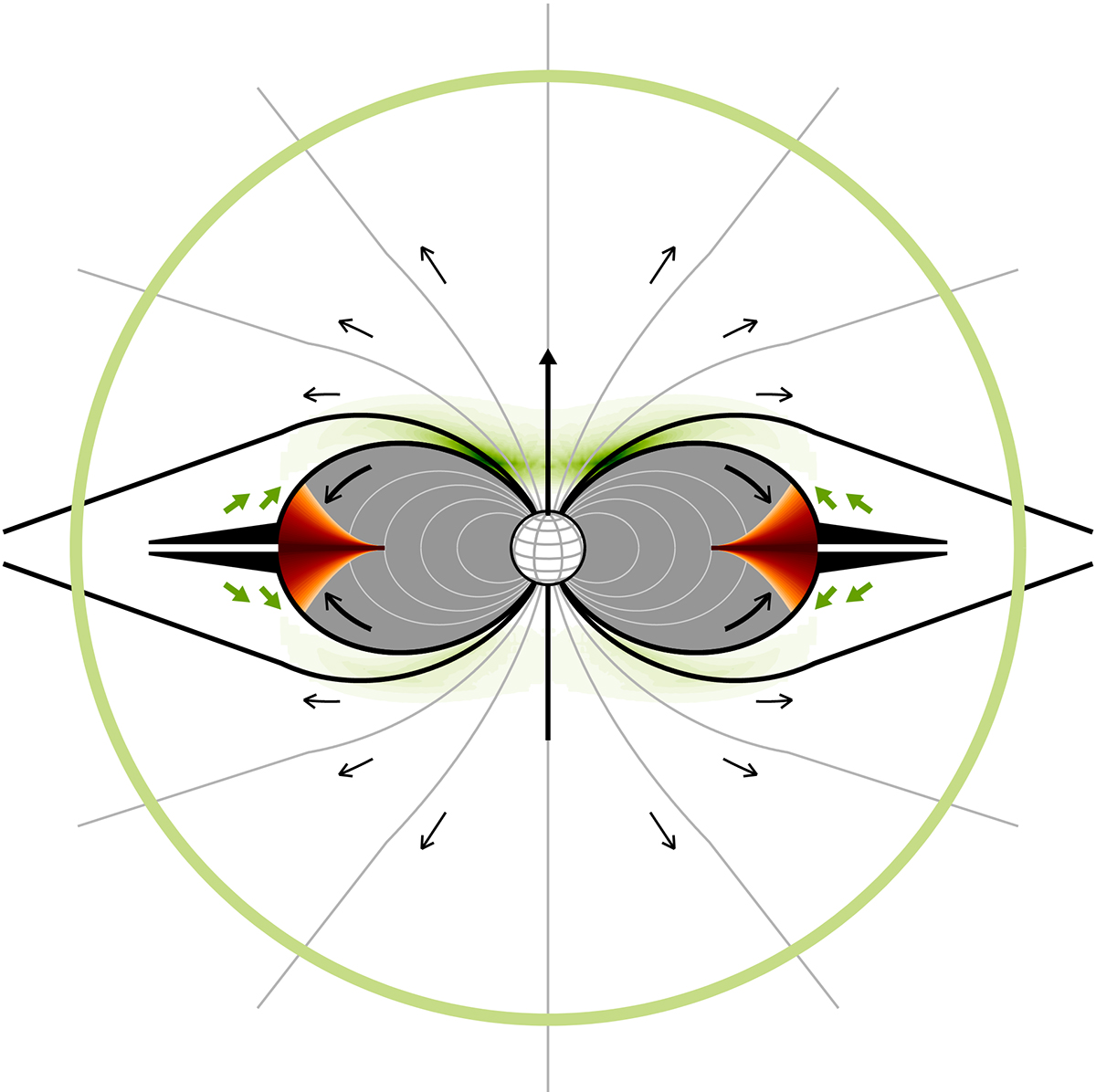Fig. 5.

Download original image
Meridional cross section of the dipole-dominated magnetosphere of HD 45166 (not to scale). At distances smaller than the Alfvén radius (RA), the magnetic field lines are closed. The last closed field lines (marked by the thick solid black line) locates the RA. At larger distances, the ionized wind opens the magnetic field lines. The region where the magnetic field traps the stellar wind is shaded. Outside of the Alfvén surface, the stellar wind freely escapes (black arrows). At lower latitudes, the fast wind plasma streams that arise from opposite hemispheres (thick black arrows) collide and shock. According to the XADM model, the shock heats the plasma producing X-rays (red regions). The equatorial magneto-disk farther than RA (thick black areas) is likely to be the site of the acceleration of electrons (green solid arrows) via magnetic reconnections. Such non-thermal electron population moving within a magnetic shell (delimited by the black and thick solid lines) radiates at the radio regime via the gyro-synchrotron emission mechanism. The outer boundary where the non-thermal electrons diffuse is shown by the solid black open field line. The relativistic electrons radiate in radio bands via a non-thermal emission mechanism (green-shaded regions). The large green circle outlines the optically thick radio photosphere of the freely escaping ionized wind.
Current usage metrics show cumulative count of Article Views (full-text article views including HTML views, PDF and ePub downloads, according to the available data) and Abstracts Views on Vision4Press platform.
Data correspond to usage on the plateform after 2015. The current usage metrics is available 48-96 hours after online publication and is updated daily on week days.
Initial download of the metrics may take a while.


